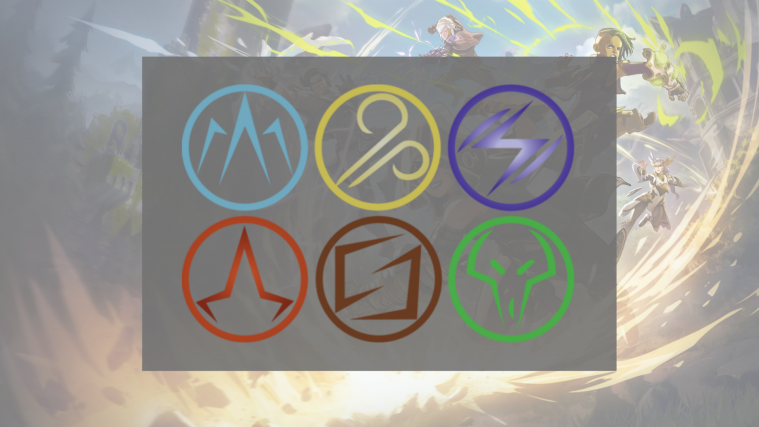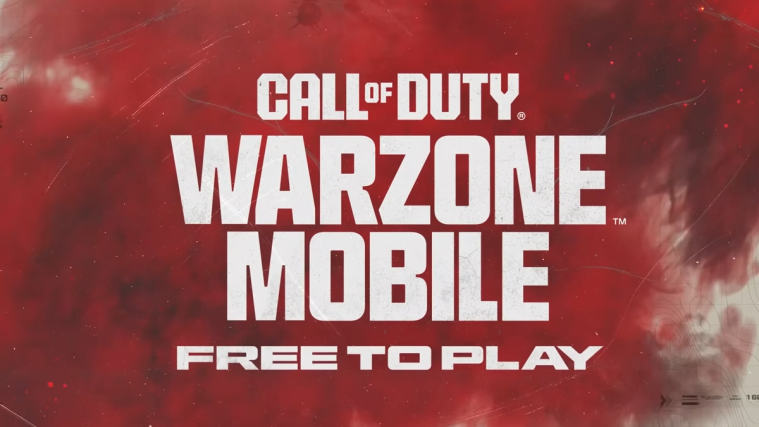Spellbreak is winning hearts everywhere with its cool theme and spellcasting action packaged in the form of a Battle Royale game. More importantly, though, the game has been designed to ensure that no matter how varied the user’s playstyle is, it will not just be able to accommodate the player, but also give them resources in the form of magic elements to thrive and level up. Any Breaker worth their salt knows by now just how important Spellbreak Elements are since they power up gauntlets and cater to different playstyles depending on which element the player uses.
However, there is a learning curve involved when it comes to mastering Spellbreak Elements. Mostly because there are a lot of them and you need to familiarize yourself with the different elemental combinations to be effective in battle. Besides this, a basic understanding of the elements will help you to choose your class and get more wins in the game. So without further ado, let’s understand everything there is to know about Spellbreak Elements.
Related: The Best Spellbreak Combos and Their Full List
Spellbreak Elements List
There are six major Spellbreak Elements that your gauntlet can wield. Each element embodies a certain aspect of nature and the user can imbue their gauntlets with the element of their choice. Elements can be used to perform either a direct spell (for a concentrated singular attack) or a bewitch an entire area with sorcery ( to affect a large area and temporarily slow down your enemy). Let’s look at each element now.
Frost
Frost is the element that allows the user to use ice for attacks in a battle. When a Breaker chooses Frost, they are capable of casting a spell that will launch powerful shards of ice like a spear or lance. This Ice Lance attack, though capable of a damage range between 15-45, is very expensive and will cost you Mana that ranges between 30 and 60. Using Frost, the breaker is also capable of wielding a powerful form of sorcery known as Flash Freeze attack which temporarily freezes an area, slows down the opponent inside it, and even freezes them from two seconds depending on the range of the attack.
Related: List Of All Spellbreak Skins and Outfits and How to Get Them
Lightning
Lightning is not as destructive in terms of attack power the way Frost is. But the advantages of using Lightning are immense, especially considering the mana consumption being between 6 and 12 depending on your attack. It should not come as a surprise that Lightning allows you to shoot bolts from your gauntlet in rapid progression since it’s a projectile element. Keep in mind that the bolts weaken with each attack and despite a low mana consumption, you may find yourself draining your mana at an unexpected rate. In terms of sorcery, you can create powerful lightning strikes within a 6-meter radius that is capable of not just obliterating the enemy but also yourself if you stand in its trajectory.
Fire
Fire is a fan favorite, especially because of how it enables the caster to send a powerful scorching Fireball spell flying towards opponents to cause critical damage. The Fireball spell has a decent range ensuring that it not just explodes on contact but also creates some damage based on the proximity to the center of the explosion as well as by lingering as a flame puddle for six seconds if it hits the ground. Fire mages are also capable of casting a powerful Firewall using a Sorcery spell. Whether it’s to block Frost attacks or Toxic fumes, the Firewall acts as a powerful defense that can burn your opponent if they try to cross it. Keep in mind that Fire is a major mana consumer just like Frost.
Related: What are Spellbreak Chapters? Everything We Know So Far
Toxic
Corrosion is the crux of all Toxic attacks which is what makes it so destructive in the first place. Toxic requires good aim and is best used in the face of multiple enemies should you come across them. A spell will allow you to shoot 10 streams of toxic jets that will induce damage depending on how many hit your opponents. But it is in the form of a Toxic cloud that this element truly thrives. The major issue that crops up with Toxic is that it hits the caster as well even though the damage is not as bad as it is for the enemy. Nevertheless, at a consumption rate of 20, the value-for-mana and damage induced by this element make Toxic super worthwhile for us.
Stone
There is no beating the Stone element in terms of damage however you will also have to sacrifice major mana depending on the nature of the attack. But, even Shockwave, which is considered to be the Stone element’s offensive weapon and requires lesser mana than the sorcery attack, causes a massive eruption of the ground to travel through it and attack the opponent in a powerful impact. The major Stone attack which requires sorcery will cast a massive stone Boulder or Boulderfalls, as they are called, that the caster can propel towards their opponent. Based on how good your aim is, how long the Boulder stays in the air, and your opponent’s proximity to the center of impact, Stone could make or break a battle for you.
Related: Best Spellbreak Talents!
Wind
If you love the last Airbender then you will love the Wind Shear spell. Quick rapid gusts of wind don’t just damage your opponents but also act as a good defense to deflect their spells. The mana consumption is fairly less for Wind as it ranges between 8 and 9 and considering the attack range extends between 5 to 20 meters, that’s good value-for-mana. If you want to perform sorcery using Wind, then you get to be the caster of a powerful wind tornado that will pull your opponent into a powerful vortex.
Each element is great in its own way and there’s a possibility that you already have an inclination towards one element. But remember that Spellbreak itself is an intricate game and there are circumstances or situations in which certain elements will become a liability. Like when you’re in a terrain with a lot of rifts, Stone will be useless, similarly, there won’t be much you can do with Stone in an aerial battle. There might also be close-range battles in which elements like Toxic and Fire might destroy you before it does anything to your opponent. So remember that while there are certain scenarios in which an element can be a total asset against another one, the opposite might happen simply because of a variable thrown at you by the game so you need to be careful in your choice.
Related: Common Spellbreak Issues and Fixes
How elements react with each other
Understanding the nature of each element and how they work is only one aspect of the entire whole that is Spellbreak elements. As a Breaker, you will be wielding two gauntlets at a time with two elements of your choice as well as their spells and sorceries. Besides, you will also be facing off with other Spellbreakers who will be wielding two gauntlets themselves. Spellbreak as a game has been designed to allow you the use of these elements in different permutations and combinations which is why it’s important to understand how these elements interact with each other.
Frost and Lightning
Lightning disables Frost magic in a big way with lightning bolts electrically charging ice puddles and water puddles that comes in contact with it. Lightning bolt spells are capable of beating Frost’s attacks in a battle. So the Frost users need to approach Lightning magic smartly and look for opportunities to turn their weakness into their enemy’s defeat. If you use them in a combination, be careful about the way you cast these element spells so as not to injure yourself in the process.
Frost and Fire
Frost and Fire have an interesting relationship. Fireballs turn ice puddles into steam puddles on direct contact making those puddles even more lethal while Frost has the ability to extinguish both Flamewall and Fireball attacks. But keep in mind that you cannot use Flash Freeze inside a Flamewall and a Fire user can obliterate you if they trap you inside one. So while Frost can be used both defensively and offensively in a battle against Fire, a Fire wielder can dominate a Frost magic with the right moves too. With these elements and their contrasting magic, it can be anyone’s game depending on the right strategy.
Frost and Toxic
Toxic’s effect on Frost is almost overwhelming because a Toxic attack turns ice puddles into Toxic puddles on contact with the puddle or a player standing on one. Even Steam Puddles turn into small Toxic Clouds when in contact with Toxic. Toxic Streams can also block a Frost attack in a battle. However, a Flash Freeze attack turns Toxic Puddles into unharmful Toxic Ice Puddles, thus neutralizing the element similarly and another benefit is that Frost can be used to freeze Toxic into ice projectiles. So depending on the Frost attack that you employ, you might be able to overwhelm Toxic.
Frost and Stone
Stone’s powerful offensive moves Shockwave and Boulderfall both shatters Ice Puddles and blocks, creating Ice Mists in their place. Stone is a great neutralizer element in general so this will be the norm even with other elements. In an attack, the more mana you give, the better you will perform as a Stone element user against other elements.
Frost and Wind
A wind shear attack will shatter ice puddles upon contact to create ice mists in their place. If you want a defensive spell, then Wind Tornado will not disappoint with its ability to affect the trajectory of Ice Lance shots and dispel any Ice Puddles and Ice Mists in its radius. Wind has a major defensive upper-hand against Frost.
Lightning and Fire
Any form of Lightning attack passes through a Flamewall or Fireball attack. Both are evenly matched in a fight and victory is heavily dependent on the caster as well as how much mana they are willing to dedicate towards the destruction of their opponent.
Lightning and Toxic
As with all other elements, Toxic enables Lightning as well. While a Lightning attack can be blocked by a Toxic Cloud and Spray, the Bolt also electrifies the cloud in the process. So the cloud which is now electrically charges can shock all players in a 10-meter radius. Lightning also electrifies Toxic Puddle on contact with them directly or a player standing on one. Both users can turn their respective elements against each other, so a careful approach with Toxic is extremely important.
Lightning and Stone
In a fight against Stone, the likelihood of Lightning losing is fairly certain. Stone attacks Shockwave and Boulderfall can easily overwhelm and block Lightning if executed with perfect timing. The only means to win against Stone is to have the perfect and powerful lightning strike in place to stop a Shockwave attack in its tracks.
Lightning and Wind
It seems like Lightning and Wind are best friends because a Wind Tornado’s gravity doesn’t affect the trajectory of Lightning Bolts and even if hit directly, the Tornado only absorbs them and becomes a Lightning Tornado. Similarly Wind Shear carries Lightning shocking players on impact. In a fight that involves these elements, both opponents are evenly matched.
Fire and Toxic
Like Lightning and Wind, it seems that Fire and Toxic are also best friends. When a Toxic Cloud comes in contact with Fire, it ignites into a large explosion of Dragonfire that deals major damage, the same happens to any Toxic projectiles that pass through a firewall or land in flames. It’s not a surprise that Fireballs also turn Toxic Puddles into Dragonfire on contact and the resulting fire spreads to connected Toxic Puddles nearby. So plan how you want to approach a battle that involves these elements because smart planning and application will decide the game.
Fire and Stone
The Fire and Stone relationship is fairly straightforward. A Boulderfall attack can be set ablaze to generate a large Flame Puddle on the ground. Against a Shockwave attack, you will see a Fire Trail left in the path of your attack. However, keep in mind that Stone being the great neutralizer will be able to block Fireballs with a powerful shockwave attack.
Fire and Wind
Avoid going against Fire with Wind and vice versa. Not only does a Tornado overwhelm Fireballs by changing their trajectory but also become a Fire Tornado if the spells are powerful enough from both sides. Wind attacks can also absorb Fire attacks making Wind a great defense against Fire. To add to the woes of a Fire user, Wind Shear spells can extinguish an unlimited amount of Flame Puddles and even parts of the Flamewall. Try to avoid confrontations with a Wind user if you’re a Fire mage.
Toxic and Stone
Stone is probably the only element against which Toxic is very vulnerable. A Boulderfall spell can block a Toxic Spray and collide with the Toxic Cloud projectile to overwhelm it. It can also remove Toxic Puddles on impact. There is not much that Toxic can do against Stone because a Shockwave attack also removes Toxic Puddles from the ground and passes through Toxic Clouds being neutralizer element. Basically Stone users have the best defense and offense against Toxic users so the Toxic users will find themselves heavily dependent on their second element.
Toxic and Wind
Toxic and Wind elements are equally matched so the strategy that you apply will play a very crucial role in this kind of battle. Wind as an element is primarily focused on reacting with other elements. So a Wind Shear spell will create a Toxic Mist upon impact. You should also keep in mind that a Wind Tornado’s center of gravity affects the trajectory of Toxic Spray heavily which turns it into a defensive attack by dissipating Toxic Cloud projectiles as well as any Toxic Mists, puddles, or clouds in its radius. However, if the Toxic is more powerful, then expect to see a Toxic Whirlwind and if ignited, a Tornado explosion. tread carefully with this combo.
Stone and Wind
Both Stone and Wind are also evenly matched in a battle. While a Wind Tornado’s gravity is capable of changing the trajectory of a Boulderfall spell, there are very little Wind users can do in the face of a Boulderfall spell when Wind Shear sorcery. The spellcaster needs to approach these elements very thoughtfully to land a win because both are heavily focused on disabling each other.
Now that you understand how the Elements work together and against each other, it will be much easier to decide your own combo. Make sure that you choose wisely.
Class and Element association
Players in Spellbreak must choose a Class before each match depending on what kind of skills they will need for the forthcoming battle. Each class has been set against an Element and choosing that class will entitle you the privileges of its element. During the battle, you will have your common gauntlet with the Element you’ve chosen to go with regardless of your class along with the Element that represents your class. Each class has four levels of mastery and different time requirements for mastery. To be at the helm of the game, you must master all classes.
Let’s understand the Class and Element association now.
Frostborn
Frostborns use Frost as their element. It is a preferred class for long-range battles and the recommended talents are Focused Mana, Fortitude, and Thirsty. Being Frostborn will give you high mobility however you will be susceptible to Harmony talents which will be able to freeze and temporarily immobilize you. Being Frostborn also means a massive mana consumption so you need to be sure that you are equipped before choosing this element.
Conduit
Conduits use Lightning as their element. Consider choosing Conduit if you’re in a long-range battle or in a battle against Air users. You need to be good at executing projectile attacks and evading enemy attacks if you want to play in the Conduit class. The required talents are Harmony, Fervor, and Recklessness. A major downside to being a Conduit is that you will be very susceptible to the sorceries of other elements so tread carefully with this one.
Pyromancer
A Pyromancer wields fire to inflict long-lasting effects on their enemies. When you choose to play as a Pyromancer, the recommended talents are Tracking, Fervor, and Recovery because casting Fire spells leave the caster extremely vulnerable. You will have to be in the front lines when you cast Firewalls for protection and create defense lines. Also, wielding fire as a Fireball spell might leave you vulnerable because of its slow projectile speed. There are both upsides and downsides to using fire depending on your opponent and terrain. Gauge your situation and proceed accordingly.
Toxicologist
Toxicologists wield poison in their arsenal in the form of Toxic. You can cause slow damage as a Toxicologist by using Toxic puddles and sprays. We recommend being a Toxicologist if you have a battle-ready common gauntlet like Fire, Frost, or Lightning which work well in combination with Toxic. Remember that Toxicologists are weak against Pyromancers and Tempests who have the elements and spells required to overwhelm the corrosive power of Toxic. The recommended talents for you are Runic Fluency, Scavenging, and Vital Stone, all of which help to protect and empower you as a Toxicologist.
Stoneshaper
Stoneshapers use Stone as their Element. A major kryptonite in the case of Stoneshapers is how heavily terrain dependent they are. All Stone attacks require some form of contact with the ground so despite how powerful the attacks are and how much despite how neutralizing this element is against others, you need to consider the Geography before choosing to be a Stoneshaper. The recommended talents for Stonershapers are Runic Fluency, Fervor, and Thirsty.
Tempest
Finally, the most mobile of all classes, Tempest users wield the sublime power of Wind to overwhelm opponents. Tempest users can harness Wind Tornados against every other element very effectively because of how Wind interacts with all of them. There is a downside to these interactions as well because as a Wind user, you are also susceptible to the common gauntlet that you choose and your defense is a bit weak making you susceptible to elements with projectile capabilities. The recommended talents for Tempest are Spellslinger, Fervor, and Recovery.
We hope these Class and Element interactions will help you decide your own class the next time you play Spellbreak.
Best Spellbreak Combos to use
Element strategies refer to your plan of action when you enter the game. Spellbreak makes you choose your class and elements before each battle, so you can be assured that no two matches will be the same. This coupled with the different combinations of elements as well as how they interact make the need for an element strategy very crucial. While you have to make the final decision, doesn’t mean it can’t be an informed one.
Check out this article for the full list of combos as well as ideal elemental pairings that you must consider before your next Spellbreak match.
Until the next Spellstorm! Take care and stay safe.
RELATED:
- Common Spellbreak Problems
- Spellbreak Crossplay Explained!
- What is Spellbreak Item Shop and How Does It Work?













